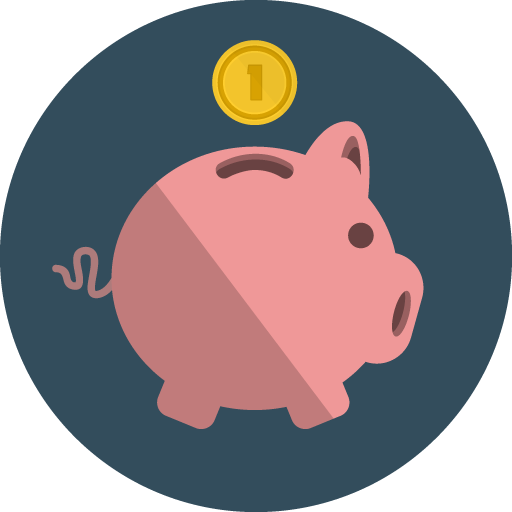$50 Off with Promo Code
Save $50 with this H&R Block code on your next purchase and maximize your savings this tax season.
Discount Code Savings Offer
Save big with our exclusive discount code. Shop now and enjoy incredible savings on your favorite items.
Save 10% Off Now!
Save 10% on your next purchase with this exclusive coupon offer. Hurry, limited time only!
H&R Block 2015 Coupon Code
Save on tax preparation with the latest H&R Block Coupon 2015! Use coupon code via to enjoy exclusive discounts on your tax services.
25% Off Savings
Save big with 25% off on your next purchase! Don't miss out on this fantastic deal.
$15 Off Online Tax Prep!
Save $15 on online tax prep at with coupon code! File your taxes easily and accurately while enjoying a discount on the service.
$50 Off with H&R Code
Save $50 on your next purchase with this H&R Block coupon code at checkout. Hurry, redeem now!
$25 Off with Promo Code
Save big with $25 off using promo code at checkout. Hurry, limited time offer!
20% Off Your Order
Enjoy a 20% discount on your entire order with this exclusive coupon. Hurry, shop now and save big!
25% Off Entire Purchase
Save 25% on your entire order with this exclusive discount offer. Hurry, shop now and enjoy the savings!
Save with code: DEALS20
Save money with code. Shop now and enjoy exclusive discounts on your favorite items. Hurry, limited time offer!
25% Off Freetax Deluxe Svc
Save big on taxes with 25% off Deluxe Service at FreeTaxUSA. File confidently and accurately while saving money.
Save money with code
Save money with code. Use it at checkout to enjoy exclusive savings on your purchase. Shop now and make the most of this special offer.
25% Off Coupon Deal
Score 25% off with this exclusive coupon offer. Save big on your next purchase!
10% Off Your Purchase
Save 10% on FreeTaxUSA - file your taxes with ease and enjoy great savings on tax preparation services.
25% Off Your Order
Save up to 25% on federal tax return at H&R Block. File your taxes with us and keep more money in your pocket. Don't miss out!
Save $5 Today!
Get $5 off your next purchase with this H&R Block coupon code. Save money on tax preparation this year.
Coupon Code: Save Money Now!
Save money with our exclusive coupon code for great discounts on your favorite products. Shop now and enjoy the savings!
25% Off Savings Deal
File federal and state tax return for under $10. Get 25% off with promo code. Save big on tax filing today!
Free Shipping Promo Code
Enjoy free shipping on all orders placed today. Hurry, this offer won't last long!
25% Off Entire Site with Code
Get 25% off everything on our site using promo code. Hurry, shop now for great savings on your favorite items!
$3 Off $12.99 Purchase
Save $3 on a $12.99 purchase with this coupon. Upgrade your shopping experience while saving big on your favorite items.
10% Off Purchase Deal
Get 10% off your entire purchase with this exclusive coupon! Save big on all your favorite items today.
$5 Off Federal Returns
Save $5 off any Federal Return preparation service with this coupon. File your taxes and save money today!
Deluxe Service: 50% Off!
Save big with 50% off Deluxe Service! Upgrade your experience for less with this exclusive offer.
100% Off Sale!
Get 100% free federal tax e-file with coupon code & save 25% on state e-file. File your taxes hassle-free and save big today!
Save Money with Code
Save money with code. Use it now to get great discounts on your favorite items!
100% off with code
Get a full 100% discount on your purchase when you use the provided code at checkout. Hurry, this offer won't last long!
10% Off Sitewide Deal
Get 10% off everything on our site! Shop now and save big on all your favorite products. Limited time offer, don't miss out!
Save on Fed Return!
Peep this! New custs, use code Save13 for 20% off Fed return. Get $10 off thru offer.
20% Off Registration
Save 20% on registration with this exclusive offer. Sign up now and enjoy the discount on your next purchase.
20% Off with Promo Code!
Save big with 20% off using coupon code. Hurry, shop now and enjoy the discount on your favorite items!
20% OFF Turbotax Online!
Get 20% OFF on Turbotax online products. File your taxes easily and save big with this exclusive offer.
30% Off Everything
Save big with our exclusive offer: 30% off on Everything! Shop now and enjoy incredible savings on all your favorite items.
$25 Off $75 Orders!
Get $25 off when you spend $75 or more on your order. Hurry, grab this deal now!
Discount Alert: $50 Off $150!
Save $50 on $150 order! Shop now and enjoy this exclusive discount on your purchase. Hurry, limited time offer!
$75 Off $225 Purchase
Save $75 off when you spend $225 or more! Shop now and enjoy great savings on your next purchase.
Deluxe State Discount
Experience the Deluxe + State package and enjoy top-notch amenities and services at unbeatable prices. Book now and save big!
Deluxe State Special
Experience the ultimate in luxury with our delux + state package. Book now and indulge in a lavish getaway like never before.
$25 Off Tax Preparation Services
Save $25 on expertly prepared individual taxes. File with confidence and get the maximum refund. Limited time offer, don't miss out!
Discount: $25.00 Off
Get $25.00 Off your next purchase with this exclusive coupon. Save big on your favorite items today!
$15 Off Delux + State
Get $15 Off Delux + State services! Upgrade your experience and save on your next visit. Don't miss out on this exclusive offer!
25% Off Savings Deal
File federal and state tax return for under $10. Get 25% off with promo code. Save big on tax filing today!
20% Off Software Download
Save 20% on H&R Block's 2024 tax season software download during the current sale. Shop now for this exclusive offer!
Free TurboTax: 37% Qualify!
File simple tax returns for free! 37% taxpayers qualify. Form 1040 + limited credits only.
$2 Off State + $0 Federal
Save $2 off State + $0 Federal File. Get your taxes done for less with this exclusive coupon offer.
20% Off Software Download
Save 20% on H&R Block's software download for the 2024 tax season! Shop now during the sale to enjoy this exclusive discount.
Free TurboTax: $0 Filing!
File simple tax returns for free! 37% qualify. Form 1040 + limited credits only.
$2 Off State + $0 Federal
Save $2 off State + $0 Federal File. Get your taxes done for less with this exclusive coupon offer.
H&R Block: 20% Off Download
Save 20% on H&R Block's 2024 tax season software download during the current sale. Shop now for the discount!
$2 Off State + $0 Federal
Save $2 off State + $0 Federal File. Get your taxes done for less with this exclusive coupon offer.
20% Off Software Download
Save 20% on H&R Block's 2024 tax season software download during the current sale event. Shop now for this limited-time offer!
Tax Filing: $0 TurboTax Free!
File simple tax returns for free! 37% taxpayers qualify. Form 1040 + limited credits only.
$2 Off State + $0 Federal
Save $2 off State + $0 Federal File. Maximize savings on tax filing with this exclusive coupon offer. Hurry, limited time only!
H&R Block: 20% Off Software
Save 20% on H&R Block's 2024 tax season software download during the sale. Shop now for the discount!
Free TurboTax: File for $0!
File simple tax returns for free! 37% taxpayers qualify. Form 1040 + limited credits only. Get started today!
$2 Off State + $0 Federal
Save $2 off State + $0 Federal File. Get your taxes done for less with this exclusive coupon offer. Don't miss out!
Free TurboTax: $0 Filing!
File simple tax returns for free! 37% taxpayers qualify. Form 1040 + limited credits only.
Save $2 on State + $0 Federal
Save $2 off State + $0 Federal File. Get your taxes done for less with this exclusive coupon offer.
H&R Block: 20% Off Software
Save 20% on H&R Block's 2024 tax software download during the sale. Shop now for the best deal this tax season!
$2 Off State + $0 Federal
Save $2 off State + $0 Federal File. File your taxes for less with this exclusive coupon offer.
20% Off Software Download
Save 20% on H&R Block's 2024 tax season software download during the current sale. Shop now for the discount!
$2 Off State + $0 Federal
Save $2 off State + $0 Federal File. File your taxes for less with this exclusive coupon offer.
Save $2 on State + $0 Fed File
Save $2 off State + $0 Federal File. Don't miss out on this great deal to save on your tax filing fees!
Save $2 on State + $0 Fed File
Save $2 off State + $0 Federal File. File your taxes for less with this exclusive coupon!
Save $2 State + $0 Federal
Save $2 off State + $0 Federal File. File your taxes with us now and enjoy this exclusive discount!
BOGO 40% off Women’s Boots
Shop now and enjoy Buy One Get One 40% off on Women's Fashion Boots. Upgrade your wardrobe with this amazing deal!
Get $10 Petro Canada Card!
Get a $10 Petro Canada Card with $99+ spend. Fill up your tank and your wallet with this exclusive offer. Limited time only!
$25 VISA Card on $200+ Spend
Receive a $25 VISA Card with a purchase of $200 or more. Limited time offer, grab yours now!
Winter Sale: 25% Off Select Sweaters
Don't miss our Winter Sale! Enjoy 25% off on Select Sweaters and Cold Weather Accessories. Stay cozy and stylish all season long.
Save $25 or 20% on H&R Block!
Get exclusive discounts with this referral link: $25 Off In-Person or 20% Off On-Line H&R Block Tax Returns. Click now!
$25 Off Tax Prep In-Person
Save $25 on in-person tax prep services. Expert assistance to maximize your deductions and refunds. Book now and get your taxes done right!
$25 Off Tax Prep
Save $25 on Professional Tax Prep services with this exclusive coupon. Don't miss out on this limited-time offer!
Tax Promo: Up to 10% Off
File your taxes right with TurboTax! Sign up now for up to 10% off federal products only. Limited time offer.
TurboTax Promo: Up to $40 Off!
Save up to $40 on any purchase with this exclusive discount offer. Hurry, limited time only!
20% Off TurboTax: 1040 + Credits
Save up to 20% at checkout! 37% eligible taxpayers. Form 1040 + select credits only. Shop now for extra savings!
TuboTax 10% Off Promo
File taxes right with TurboTax! Sign up now for up to 10% off federal products only. Limited time offer, don't miss out!
TurboTax Promo: Up to $40 Off
Save big with up to $40 off any purchase! Hurry, grab this amazing discount on your order now.
Tax Promo: Up to 10% Off
File taxes right with TurboTax! Sign up now for up to 10% off federal products only. Limited time offer, don't miss out!
TurboTax Promo: Up to $40 Off!
Get up to a $40 discount on any purchase with this special offer. Save big on your order today!
Tax Promo: Up to 10% Off
File taxes right with TurboTax! Sign up now for up to 10% off federal products only. Limited time offer, don't miss out!
Tax Savings: Up to 10% Off
File your tax right with TurboTax! Sign up now for up to 10% off federal products only. Limited time offer - don't miss out!
20% Off TurboTax: 37% Qualify
Save up to 20% on your purchase at checkout! 37% of taxpayers qualify. Form 1040 + limited credits only. Shop now!
TurboTax Promo: Save $40 Now!
Save big with up to $40 off your entire purchase! Shop now and enjoy the discount on any order.
Tax Promo: Up to 10% Off
Save big on tax filing with TurboTax! Sign up now for up to 10% off federal products only. Limited time offer, file your taxes right today.




